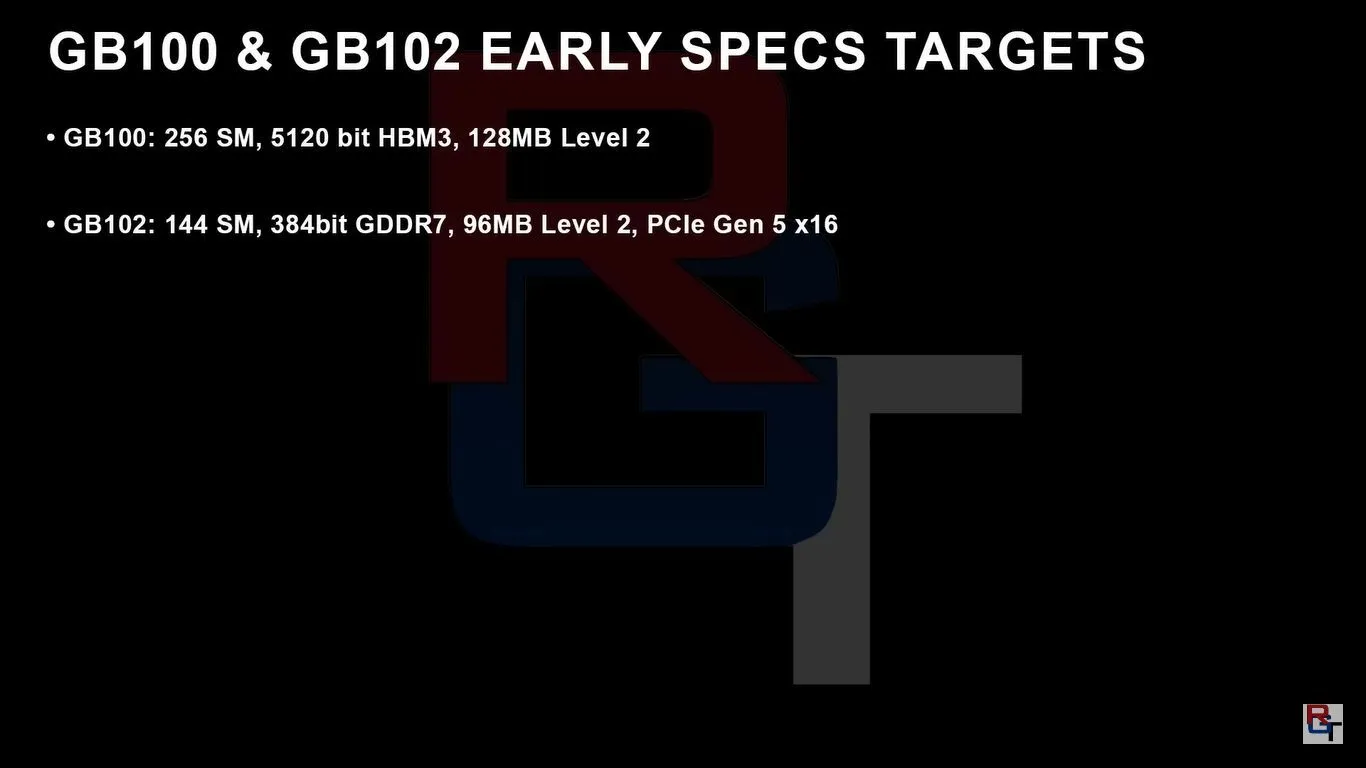The next NVIDIA RTX 50 series graphics cards are expected to make use of the most recent Blackwell GPU architecture. This will be a significant improvement over the RTX 40 Ada Lovelace series GPUs that were used in the previous generation of graphics cards from NVIDIA. RedGamingTech and Moore’s Law Is Dead are two YouTube channels that have recently published in-depth films discussing the rumors around the forthcoming NVIDIA RTX 50 series graphics cards.
The rumored specifications, performance comparisons, and models of the NVIDIA RTX 50 series Of graphics cards will be outlined in this post.
GPU rumors concerning the NVIDIA RTX 50 series ‘Blackwell’: release date, specifications, performance, and more
NVIDIA is working on a new graphics card architecture that will replace the existing one, which is called Hopper. This new architecture will be called Blackwell. In addition to the information that was previously divulged regarding the consumer-grade GB100 GPU, we now have details regarding the consumer-grade GB102 GPU. There have been rumors that New graphics processing units (GPUs) would be introduced in 2024, but it is probable that additional details will not be disclosed until the NVIDIA GTC 2024.
ADA-next seems to be another monolithic chip.
— kopite7kimi (@kopite7kimi) July 19, 2022
@hms1193 @OneRaichu ADA-next seems to be another monolithic chip.
In December of 2016, the well-known leaker known as kopite7kimi stated that the GPUs of the Blackwell series would also utilize a monolithic chip. Moore’s Law Is Dead, of the YouTube channel Moore’s Law Is Dead, also said that NVIDIA was not concerned about AMD’s chiplet plan. While AMD is considering going the whole chiplet route with RDNA4, NVIDIA is planning to continue with the monolithic die.
We have witnessed a reduction in the size of NVIDIA’s process nodes over the course of many years. The TSMC 12nm node was used for Turing, while Samsung 8nm was used for Ampere, and the TSMC 4N node is utilized for the Ada Lovelace graphics cards currently in use. TSMC has also experienced a great deal of success while working on the development of the 3nm node, which they began producing on a large scale during the final quarter of 2022. As a result, we should anticipate that NVIDIA’s forthcoming Blackwell graphics processing units will be based on the 3nm node.
It's too early to discuss Blackwell now. I won't be surprised if it has a 512-bit memory interface.
— kopite7kimi (@kopite7kimi) April 7, 2023
It’s too early to discuss Blackwell now. I won’t be surprised if it has a 512-bit memory interface.
Kopite7kimi has made the assumption that Blackwell may be equipped with a 512-bit WeU; however, it has been quite some time since NVIDIA has utilized that arrangement. When they released the GTX 285 about 14 years ago, that was the last time they used a 512-bit card.
It is possible that some lower-end cards will utilize GDDR6X memory, however it is anticipated that the majority of the GPUs in the NVIDIA RTX 50 series will feature GDDR7 memory. It is reasonable to anticipate the release of GDDR7 by 2024, given that Samsung is already hard at work developing an improved version of the GDDR6W memory technology.
The following are also mentioned in the speculations of RedGamingTech:
- The continuation of PCIe Gen 5
- Clock frequency target over 3GHz
- Huge overhaul to the CUDA architecture
- Advanced denoising technology
- More focus on ray tracing
The following are the two rumored models of GPUs that belong to NVIDIA’s RTX 50 series:

There are also rumors that the Blackwell series will receive performance increases that are roughly twice as powerful as those offered by Ada GPUs. This is analogous to how the graphics processing units (GPUs) in the RTX 40 series improve upon those in the RTX 30 series.
In order to gain insight about the upcoming Powerful graphics processing units (GPUs), industry insiders and leakers are actively researching NVIDIA’s research and development activities. But, as kopite7kimi pointed out, it is far too soon to talk about the next generation of NVIDIA GPUs; therefore, those interested in technology will have to wait for additional leaks.




Leave a Reply